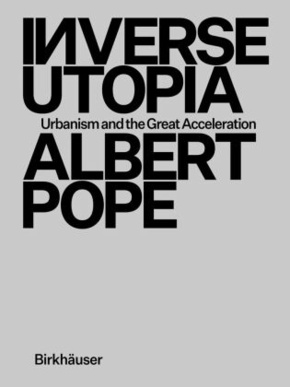Inverse Utopia - Urbanism and the Great Acceleration
| Verlag | Birkhäuser Berlin |
| Auflage | 2024 |
| Seiten | 304 |
| Format | 19,0 x 2,8 x 24,2 cm |
| Gewicht | 911 g |
| Artikeltyp | Englisches Buch |
| ISBN-10 | 3035627002 |
| EAN | 9783035627008 |
| Bestell-Nr | 03562700A |
Inverse Utopia befasst sich mit dem Städtebau aus Sicht der Moderne und der Postmoderne sowie der Transformation der Stadt durch ihre Kommerzialisierung. In seinem früheren Buch Ladders (1997) beschreibt der Autor das Auftauchen der Sackgasse als dafür typische urbane Erscheinungsform.
In den Texten seines neuen Buches Inverse Utopia plädiert Pope dafür, architektonische und urbane Formen zu entwickeln, die auf heutige ökologische und soziale Herausforderungen reagieren. Der Titel bezieht sich dabei auf eine Aussage des Philosophen Günther Anders: Während Utopisten nicht in der Lage sind, die Dinge zu machen, die sie sich vorstellen, sind die anderen nicht in der Lage, sich die Dinge vorzustellen, die sie machen.
Das Buch ist ein eigenständiger Band, kann aber als Fortsetzung von Ladders gelesen werden.
Sammlung von Essays und Entwurfsprojekten Das städtebauliche Projekt der Moderne und Postmoderne Zusammenhänge von Morphologie und Konsumwirtschaft
Inverse Utopia looks at urbanism from the perspective of modernism and postmodernism, as well as at how commercialization has transformed the modern city. In his earlier book Ladders (1997), the author described the emergence of the cul-de-sac as a typical manifestation of this trend.
In this new book, Inverse Utopia, Pope argues for the development of architectural and urban forms that respond to contemporary ecological and social challenges. The title refers to a statement by the philosopher Günther Anders: whereas utopians are unable to make the things they imagine, others are unable to imagine the things they make.
This book is a stand-alone volume but may be read as a sequel to Ladders.
Collection of essays and profiles of design projects The urban design project of modernism and postmodernism Connections between architectural morphology and the consumer economy

